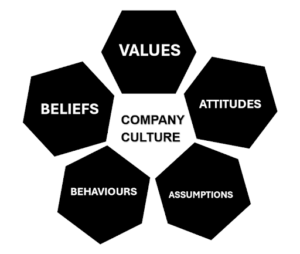In today’s rapidly evolving job market, recruiting is far more than just evaluating the qualifications and technical skills of a candidate. More and more organizations—such as Google, Zappos, and Netflix—make cultural fit the centerpiece of hiring as a critical part of the process. Employees with solid cultural fits are 47% more likely to stay with a company for more than three years than technically qualified employees hired only for such talents, a Harvard Business Review study concludes.
As firms strive to establish high-performing teams, cultural fit ensures employees adopt the mission, values, and work atmosphere of the firm and enjoy higher retention, more cohesive teamwork, and greater job satisfaction. Skills can be acquired, but a worker who does not connect to the firm’s culture may struggle to gel and thrive.
What is Cultural Fit?

Cultural fit would mean how closely a candidate’s work ethic, values, and behavior match those of the company. It is not about personal likability or common interests but rather that employees are a good influence for the workplace culture and are in line with the long-term vision of the company.
For instance, a company that is versatile and innovative may not be the best option for someone who prefers rigid systems and monotonous jobs. Similarly, a collaborative and team-focused culture may not be the best for someone who excels in independent jobs.
Why Hire for Cultural Fit?
Hiring for cultural fit has numerous benefits, including:
| Benefit | Impact |
| Higher Employee Retention | Employees who are well-suited to the corporate culture tend to stay longer, hence reducing turnover, as well as saving the company money in hiring costs. |
| Increased Job Satisfaction | Good cultural fit leads to increased job satisfaction, hence having motivated employees who are committed on the job. |
| Better Team Collaboration | Employees who are well-suited to the corporate culture tend to cooperate well with other employees, hence a productive and positive work environment. |
| Enhanced Performance | When employees feel a sense of belonging, they work harder, are more creative, and committed to business success. |
How to Measure A Cultural Fit?
Measuring cultural fit requires a structured process that entails:
1. Defining Your Company Culture
Before testing the candidates, companies must clearly define their values, mission, and desired workplace behavior. Knowing them will help identify the traits that would work best in your company’s culture.
2. The Right Interview Questions
Classic technical interviews may not provide good enough insights about a candidate’s cultural fit. Instead the hiring manager must employ behavioral and situational questions such as the following:
“Tell me about a working environment in which you were most efficient and happy.”
“Tell me about an incident of having a conflict at the workplace. How did you deal with it?”
“What is the most important thing you value about a working environment?”
These questions help to evaluate the compatibility of a candidate’s mind-set and work style with that of the organization’s culture.
3. Using Pre-Employment Tests
Personality tests and work simulation tests can define a candidate’s problem-solving approach, team skills, and adaptability. These tests minimize prejudice and give a lower subjective method of measuring compatibility of culture.
The Pitfalls of Hiring Solely for Cultural Fit
Although cultural fit is vital, it must not be a justification for discriminatory or exclusion-based hiring. Some typical mistakes are:
| Mistake | Issue |
| Creating a Homogeneous Culture | Hiring individuals with similar backgrounds and personalities might stifle diversity and creativity. |
| Confusing Cultural Fit with Personal Compatibility | Hiring managers are not confusing cultural fit with social compatibility or likability. |
| Unconscious Biases | Overemphasizing culture fit can lead to unintentional biases that exclude candidates who can introduce fresh ideas and skills. |
Culture Fit vs. Culture Add: A Better Approach
Instead of hiring only for cultural fit, organizations should consider culture add—bringing in individuals who share core company values but also introduce new perspectives and experiences.
To hire for culture add, companies should:
- Look for candidates who align with the company’s mission but offer unique viewpoints.
- Encourage diverse teams that challenge the status quo and promote growth.
- Assess how a candidate’s fresh ideas and skills can enhance the company culture rather than just fitting into it.
Balancing Your Way to Better Hires
The optimal hiring strategy is the middle ground between technical proficiency and cultural fit. Although employing an individual with the same company culture promotes a positive working environment, valuing diversity and flexibility guarantees long-term success and innovation.
By organizing the hiring process to measure cultural fitness and value contribution businesses can build healthier more dynamic teams that deliver business success.





